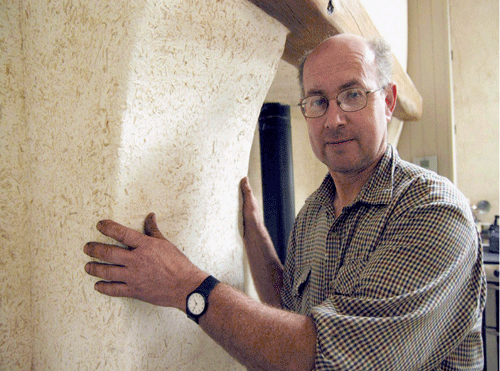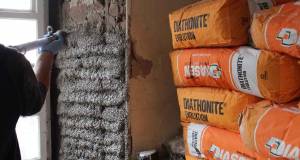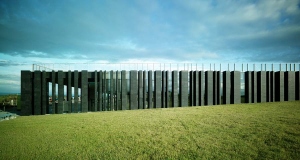- Product News
- Posted
New hemp plaster product offers flexibility and carbon gains
Hempire Building Plaster, a new high-performance natural material that competes with more commonly used products in terms of performance and ease of use but can actually make for better, more pleasant buildings has been developed in Ireland.

Robert Longwell, hemp farmer standing in his Hempire plastered traditional cottage
The plaster is manufactured from hemp and calcium-rich non-hydraulic lime: “Hemp is a straw material but when you combine it with lime it’s like an organic masonry,” said Hempire Building Materials’ Marcus McCabe.
Hempire can be used in conjunction with any kind of building: “You can have a steel, timber or concrete structure and use the hemp and lime for all of the infill material,” said McCabe. “The floors, walls and roof could all be made from it.”
Hempire can also be applied to plasterboard or directly to any kind of masonry, giving additional insulation and helping to create an air seal.
The product is currently undergoing tests at Kingston University in Britain. “We’re looking at 0.13 watts per square metre. It has a density when dry of 700 kilogrammes per metre cubed.”
As a natural material, hemp and lime-based plaster is ideal for creating pleasant living and working environments: “The first thing people say when they come into a hemp building is how nice the atmosphere is. It just doesn’t get condensation, it doesn’t happen. The walls take it in and release it out.
“People like being in the buildings, regardless of whether it is a traditional artisan building or a more commerical one. It has a nice atmosphere [whereas] a concrete building has a hard atmosphere,” he said. Central to this is the lime’s breathability.
Another significant advantage of Hempire is that is can be laid-on in significant thickness, such as 50 millimetres, without falling off and sets faster than traditional limes alone.
On the environmental front the product is not only a natural material but is also good from a carbon point of view: “The material is actually carbon negative,” said McCabe. “It means that en masse use removes CO2 from the atmosphere,” he said. Hemp absorbs ten tonnes of CO2 per hectare per annum.
“My whole background is in eco-building – I built one of the first straw bale houses in Ireland,” he said.
McCabe feels that modern farming techniques, derived from silage, can bring hemp down in price to compete with fibreglass and other building materials.
Plans are underway to also produce similarly composed bricks, blocks and ready mix.
Last modified on Thursday, 13 March 2008 18:14
Related items
-
 Ecological brings Lime Green plasters to Ireland
Ecological brings Lime Green plasters to Ireland -
 Diasen thermal lime plaster features on RTE renovation
Diasen thermal lime plaster features on RTE renovation -
 Ecological take double honours at SEAI Energy Show
Ecological take double honours at SEAI Energy Show -
 SMET launch new moisture regulating, anti-mould plaster
SMET launch new moisture regulating, anti-mould plaster -
 Ledbury passive house embraces warmth, wood & light
Ledbury passive house embraces warmth, wood & light -
 Will the Stirling Prize winner be sustainable?
Will the Stirling Prize winner be sustainable?

